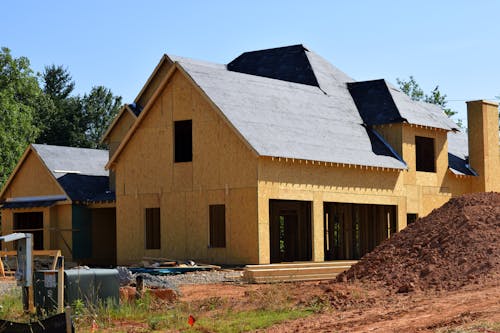Risks in Affordable Housing Development: Important Factors to Watch
Introduction
Affordable housing development is a critical component of addressing housing shortages and ensuring that low- to moderate-income families have access to safe and stable living conditions. However, developing affordable housing is fraught with risks that can derail projects, increase costs, and reduce the overall impact of these initiatives. This document outlines the key risks associated with affordable housing development and provides insights into how stakeholders can mitigate these challenges.

1. Financial Risks
One of the most significant risks in affordable housing development is financial uncertainty. Affordable housing projects often rely on a complex mix of funding sources, including government subsidies, tax credits, private investments, and grants. Securing these funds can be time-consuming and unpredictable, leading to delays or even project cancellations. Additionally, changes in government policies or funding priorities can disrupt the financial stability of a project.
To mitigate financial risks, developers must engage in thorough financial planning and secure multiple funding sources. Building strong relationships with government agencies, investors, and community organizations can also help ensure a steady flow of resources. Furthermore, developers should consider contingency plans to address potential funding shortfalls.
2. Regulatory and Compliance Risks
Affordable housing projects are subject to a wide range of regulations at the local, state, and federal levels. These regulations can include zoning laws, building codes, environmental standards, and affordability requirements. Navigating this regulatory landscape can be challenging, and non-compliance can result in costly fines, delays, or even the termination of a project.
To manage regulatory and compliance risks, developers must stay informed about relevant laws and regulations and work closely with legal experts and government officials. Early engagement with local communities and stakeholders can also help identify potential regulatory hurdles and facilitate smoother project approvals.
3. Construction Risks
Construction risks are inherent in any development project, but they can be particularly acute in affordable housing due to tight budgets and timelines. Common construction risks include cost overruns, delays, labor shortages, and unforeseen site conditions. These issues can escalate costs and push back project completion dates, reducing the availability of affordable housing units.
To mitigate construction risks, developers should conduct thorough site assessments and feasibility studies before breaking ground. Hiring experienced contractors and project managers can also help ensure that construction stays on track and within budget. Additionally, developers should build flexibility into their timelines to account for potential delays.
4. Market Risks
Market conditions can significantly impact the success of affordable housing projects. Fluctuations in property values, rental rates, and demand for housing can affect the financial viability of a project. For example, if market rents rise significantly, it may become more difficult to maintain affordability requirements. Conversely, if demand for housing declines, units may remain vacant, reducing revenue and undermining the project’s financial stability.
To address market risks, developers should conduct comprehensive market analyses to assess demand and competition. Diversifying the types of housing units offered (e.g., a mix of rental and ownership options) can also help mitigate the impact of market fluctuations. Additionally, developers should consider long-term trends and demographic shifts when planning their projects.
5. Community and Political Risks
Affordable housing projects often face opposition from local communities and political leaders. Concerns about increased traffic, changes to neighborhood character, and perceived impacts on property values can lead to resistance and delays. Political changes, such as shifts in local government leadership or policy priorities, can also create uncertainty and disrupt project plans.
To navigate community and political risks, developers should prioritize community engagement and transparency. Holding public meetings, addressing concerns, and highlighting the benefits of affordable housing can help build support for a project. Building strong relationships with local officials and stakeholders can also help ensure that projects align with community needs and priorities.
6. Operational Risks
Once an affordable housing project is completed, operational risks can arise. These risks include maintaining affordability, managing tenant relations, and ensuring the long-term financial sustainability of the property. High tenant turnover, maintenance costs, and difficulties in enforcing affordability requirements can strain resources and reduce the project’s impact.
To manage operational risks, developers should establish robust property management practices and invest in tenant support services. Regular maintenance and proactive management can help preserve the quality of housing units and reduce long-term costs. Additionally, developers should explore innovative financing models, such as social impact bonds, to ensure the financial sustainability of their projects.
7. Environmental Risks
Environmental risks, such as natural disasters, climate change, and environmental contamination, can pose significant challenges to affordable housing development. Flooding, wildfires, and other climate-related events can damage properties and displace residents. Environmental contamination, such as soil or water pollution, can also lead to costly remediation efforts and delays.
To address environmental risks, developers should conduct thorough environmental assessments and incorporate climate resilience into their designs. Building to higher environmental standards, such as LEED certification, can also help reduce long-term risks and improve the sustainability of affordable housing projects.
8. Social Risks
Affordable housing projects must also contend with social risks, such as stigma and discrimination. Affordable housing developments are sometimes perceived as undesirable or associated with negative stereotypes, which can affect tenant satisfaction and community integration. Discrimination in housing practices can also limit access to affordable housing for certain populations.
To mitigate social risks, developers should focus on creating inclusive and welcoming communities. Designing high-quality, aesthetically pleasing housing units can help challenge negative perceptions and promote social integration. Additionally, developers should implement fair housing practices and work to eliminate barriers to access for marginalized groups.
Conclusion
Affordable housing development is a complex and challenging endeavor, but it is essential for addressing housing inequality and promoting social equity. By understanding and addressing the risks outlined in this document, developers, policymakers, and community stakeholders can work together to create successful and sustainable affordable housing projects. Proactive planning, community engagement, and innovative solutions are key to overcoming these challenges and ensuring that affordable housing remains a viable and impactful solution for years to come.
